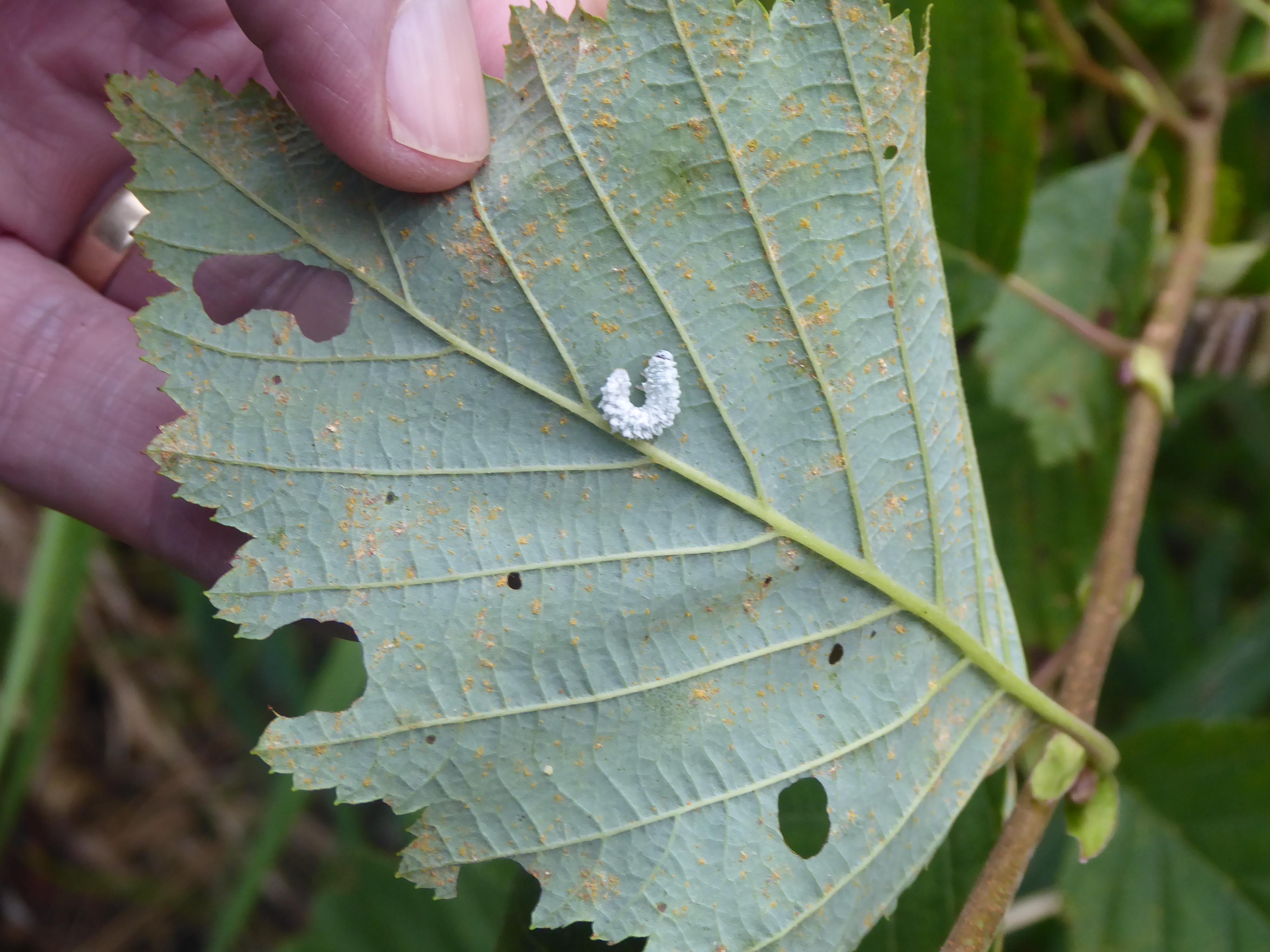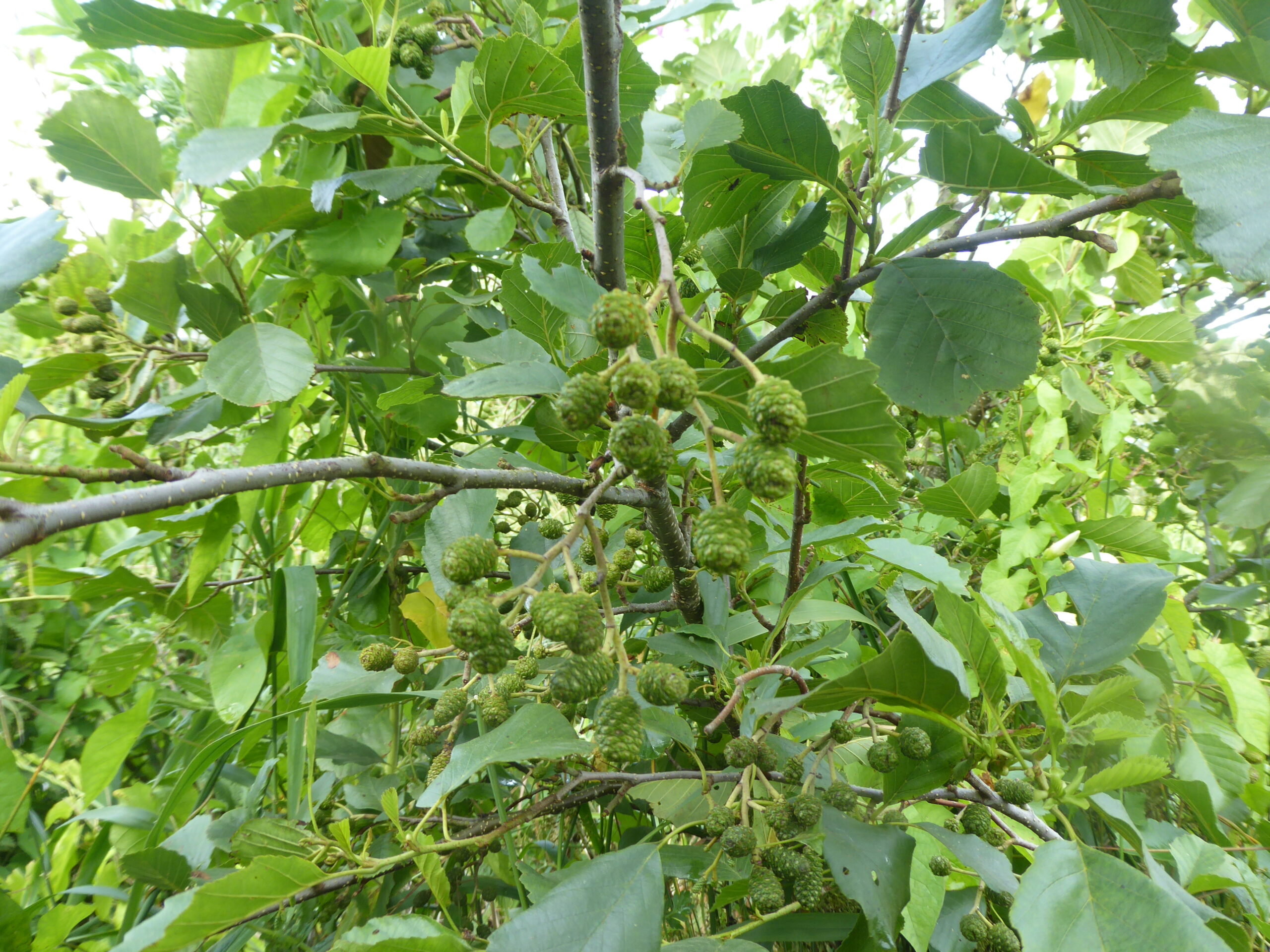Yesterday, I took part in the Big River Watch. I spent 15 minutes over on the far bank of the stream, just watching the water (plus time to tot up the plant life and enter data on the app). It wasn’t as productive as the Big Butterfly Count back in August. From the list I was only able to record flies and could add up to three other things not on the list. I added a blackbird, water mint and wild angelica. Other items that I saw were the usual suspects … dung flies, slugs, and spiders, water pepper, grass, stinging nettles, dock, branched burr-reed, forget-me-not, bedstraws, and the bindweed which is trying to strangle the smallest of the new alders. The water quality was quite sludgy, with bubbles popping and an oily sheen in places.
I mentioned the alders and haven’t officially recorded them yet. We planted the alders – ten in 2020 (of which we have seven left, which are now about 10-12 feet tall) – and another eighteen this spring. We have been told that alders were good for soaking up flood water and we have noticed that they are less invasive than the willows, which pop up saplings even from prunings left lying around. There is a really good information resource on The Woodland Trust website. The picture above shows the female catkins on one of the trees in July. The latest alder saplings are all growing at different rates, some are six foot tall already, others have lost a lot of leaves or are patchy. We saw the Birch Sawfly Larvae the other week on some alders in pots. Yesterday we noticed the Woolly Alder Sawfly Larvae curled up on some of the saplings in the watermeadow, surrounded by evidence of its feasting. Also some leaves curled and folded with webbing inside -presumably nests of sawfly eggs.

